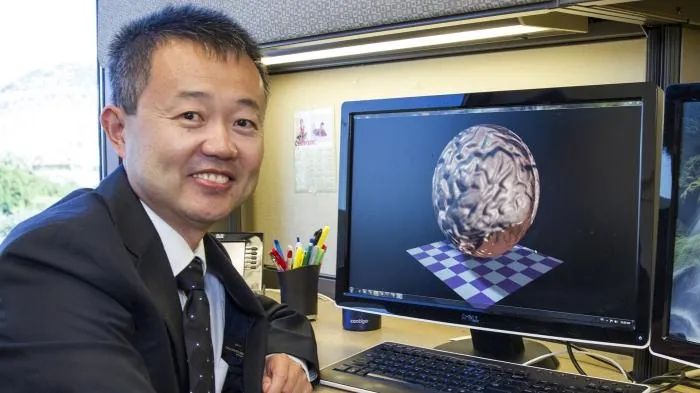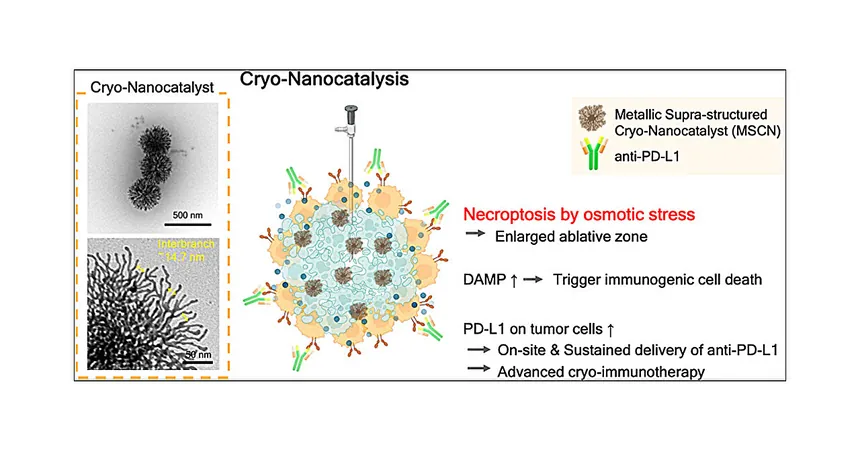
ASU Scientists Harness AI to Combat Rising Myopia Among Children
2024-10-07
Author: Wei
ASU Scientists Harness AI to Combat Rising Myopia Among Children
As the prevalence of myopia continues to increase, particularly among younger populations, experts estimate that by 2050, nearly half the global population could be affected by this condition. Researchers at Arizona State University (ASU) are stepping up to tackle this crisis by developing advanced diagnostic tools powered by artificial intelligence (AI).
The phenomenon known as "near work" — including activities such as scrolling on phones and staring at computer screens — is believed to be a contributing factor to this troubling trend. For many, myopia is manageable with prescribed glasses or contact lenses; however, for others, it can escalate into a more severe condition known as myopic maculopathy. This ailment results in significant damage to the eye's macula, the part responsible for sharp central vision, leading to potential blindness.
In their latest research, published in the prestigious journal JAMA Ophthalmology, an innovative team from ASU’s School of Computing and Augmented Intelligence has unveiled new AI-driven methods for diagnosing myopic maculopathy more effectively. The condition has far-reaching implications, serving as a leading cause of serious vision impairment; around 10 million individuals were affected just a decade ago. Alarmingly, projections suggest that by 2050, more than 55 million people may face vision loss, with up to 18 million expected to become blind due to this condition.
Prompt detection is crucial, as myopic maculopathy is irreversible. The earlier it is identified, the better the chances of slowing its progression, especially in children who are vulnerable to its impacts. Ophthalmologists can utilize specialized lenses and treatments to mitigate the disease's effects, highlighting the need for proactive strategies.
Yalin Wang, PhD, a leading professor in computer science and engineering at Fulton Schools, notes the transformative role that technology can play in this field. He stated, “AI is ushering in a revolution that leverages global knowledge to improve diagnostic accuracy, particularly in the early stages of the disease. These advancements can lead to reduced medical costs and enhanced quality of life for entire communities.”
The challenge to improve computer-aided screening systems for retinal images arose from the Medical Image Computing and Computer Assisted Intervention (MICCAI) Society, driving researchers to rise to the occasion. With current diagnostic practices often reliant on time-consuming optical coherence tomography scans, the ASU team’s work aims to streamline and enhance detection.
Together with computer engineering doctoral student Wenhui Zhu and medical neurologist Oana Durmitrascu, MD, Wang’s team developed new AI algorithms, called NN MobileNet, specifically designed for analyzing retinal images and accurately classifying the severity of myopic maculopathy. Furthermore, they focused on employing deep neural networks to ascertain the spherical equivalent in retinal scans, which assists medical professionals in prescribing corrective eyewear.
As a collaborative effort with other teams who participated in the MICCAI challenge, their findings contribute to a broader global effort aimed at tackling the growing issue of myopic maculopathy. Wang emphasizes the potential of these solutions to rectify health disparities faced by individuals in rural and underserved areas, stating, “AI-powered technology will significantly improve the quality of life for populations worldwide, including those in developing countries.”
Ross Maciejewski, director of ASU’s School of Computing and Augmented Intelligence, acknowledged the importance of Wang’s groundbreaking research. He concluded, “With the continued rise of myopia and myopic maculopathy, we urgently need solutions to prevent vision loss and ensure effective treatment options for patients.”
As the world grapples with the myopia epidemic, cutting-edge research like this paves the way toward a brighter, clearer vision for future generations.




 Brasil (PT)
Brasil (PT)
 Canada (EN)
Canada (EN)
 Chile (ES)
Chile (ES)
 España (ES)
España (ES)
 France (FR)
France (FR)
 Hong Kong (EN)
Hong Kong (EN)
 Italia (IT)
Italia (IT)
 日本 (JA)
日本 (JA)
 Magyarország (HU)
Magyarország (HU)
 Norge (NO)
Norge (NO)
 Polska (PL)
Polska (PL)
 Schweiz (DE)
Schweiz (DE)
 Singapore (EN)
Singapore (EN)
 Sverige (SV)
Sverige (SV)
 Suomi (FI)
Suomi (FI)
 Türkiye (TR)
Türkiye (TR)